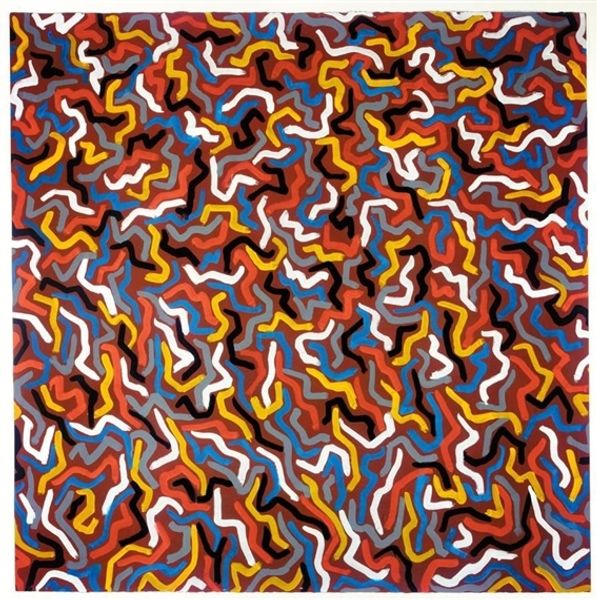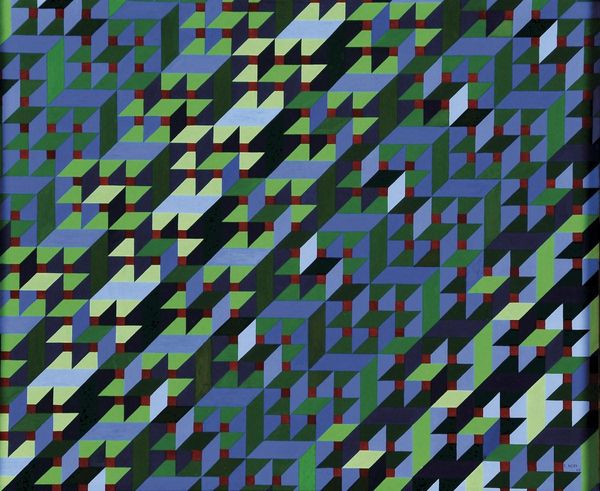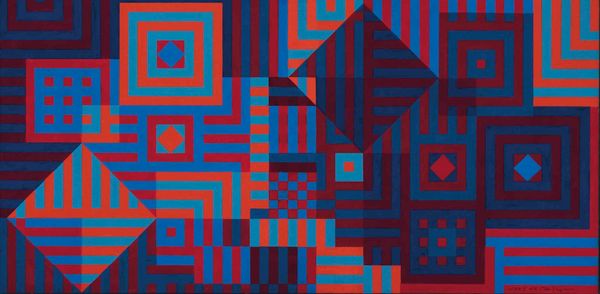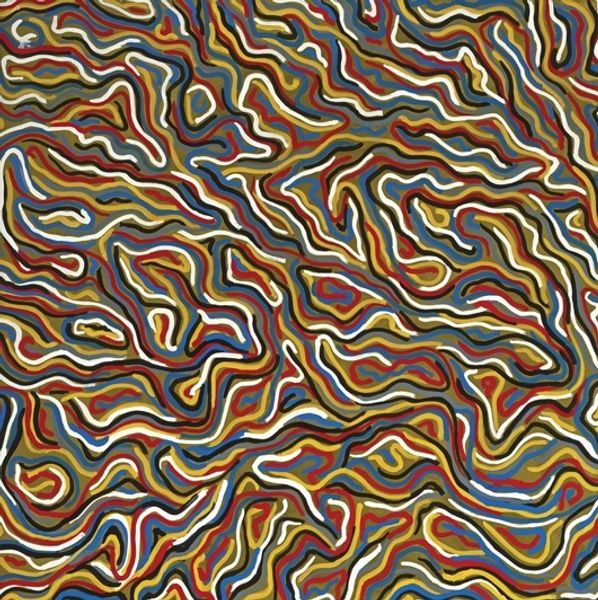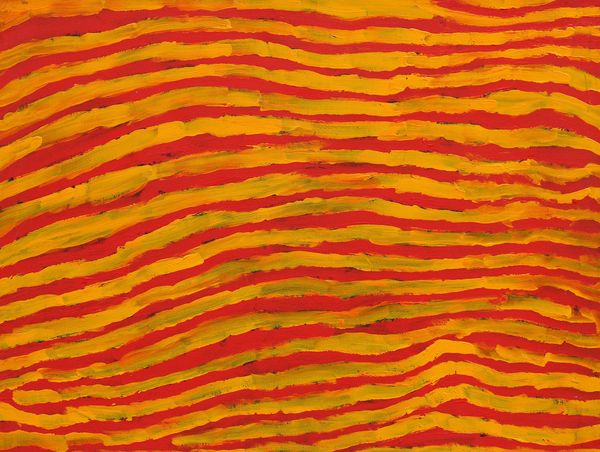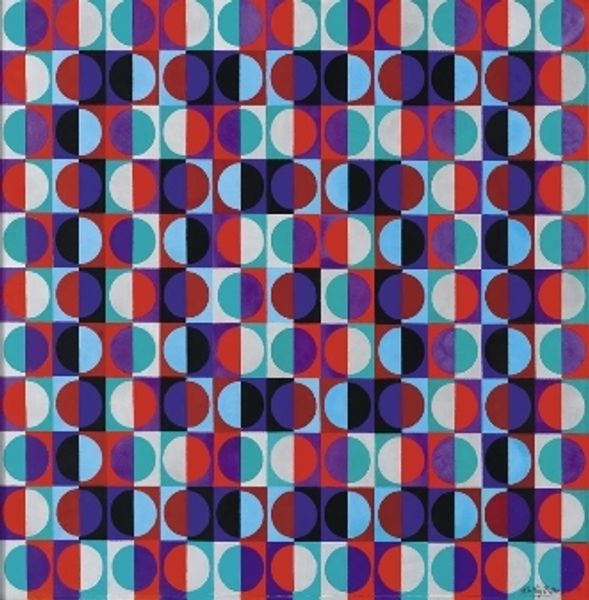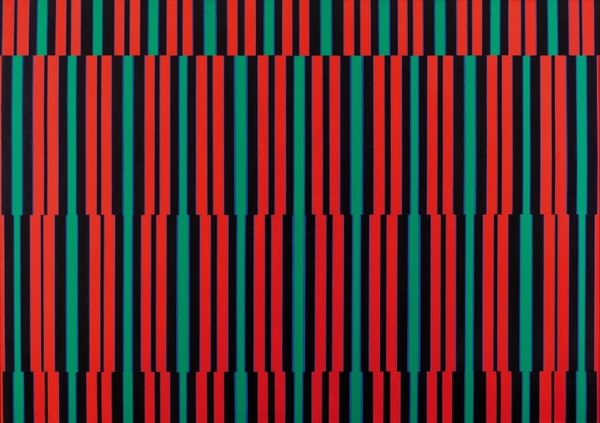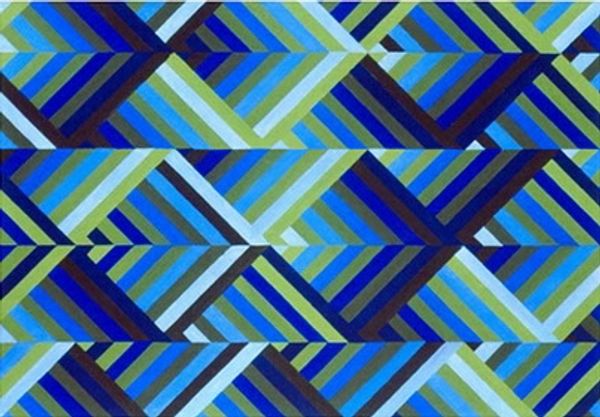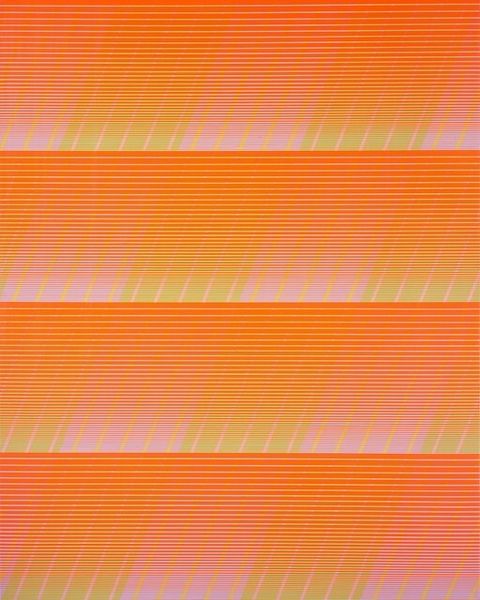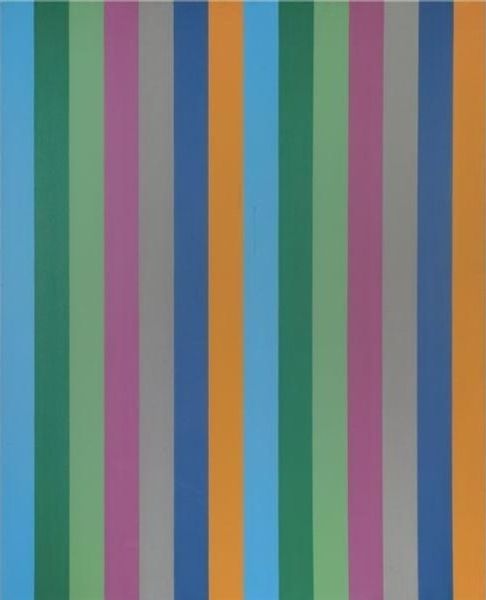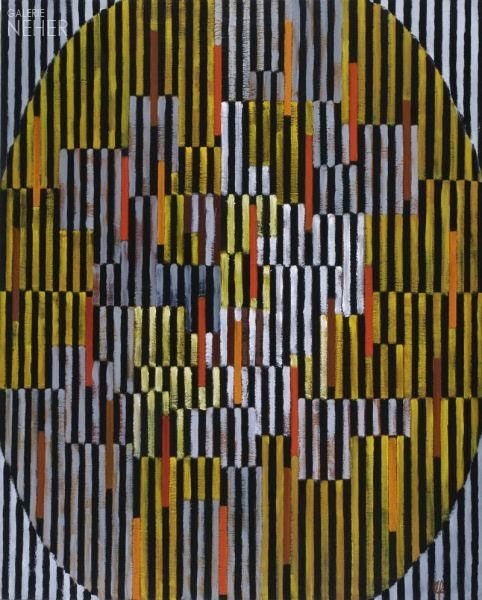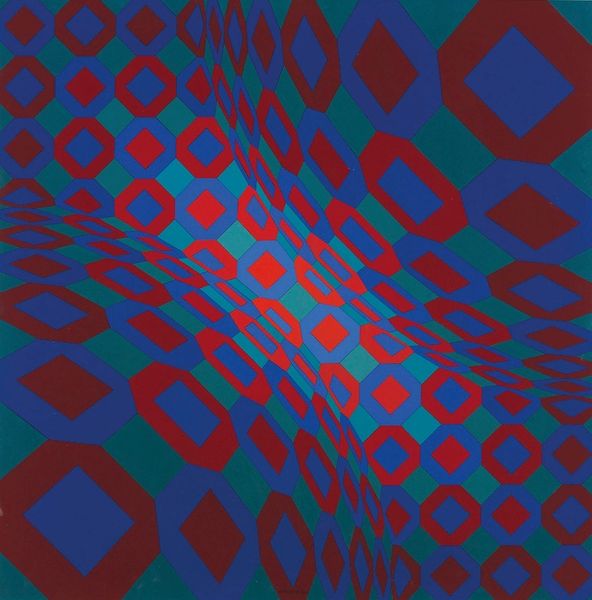
Copyright: Yayoi Kusama,Fair Use
Curator: Right, let’s delve into this artwork. What strikes you first about Yayoi Kusama's "Waves on the Hudson River" from 1988? It's an acrylic on canvas, alive with patterns. Editor: It makes me feel almost seasick, but in a playful way! The scale seems quite intimate, and the combination of bright blues and those wriggling white shapes... there's a disorienting energy, like looking into a funhouse mirror reflecting the water. Curator: The squiggles indeed evoke fluidity, while the dots disrupt any simple reading of "waves." Thinking of symbolic patterns, does it tap into cultural memories related to water deities or folklore around rivers? I wonder about their meaning cross-culturally and how they've changed over time? Editor: I see the cultural ties, absolutely, but I think Kusama, given her personal history and the context of the 80s art scene, pushes beyond traditional symbol sets. Repetition as resistance, perhaps? Maybe an exploration of personal anxieties via endless replication that hints at societal obsessions? Curator: Interesting! Are the forms more than just anxieties writ large? Each wavy line contains equally spaced dots—do they speak to rigid societal structures or cycles of existence broken up by pivotal, punctuated events, a kind of rhythmic breathing made visible? Editor: Maybe it’s about mental states, or perhaps a comment on commodification. She repeats this design again and again... making waves…to flood the art market with recognizable product. Can that endless, potentially suffocating effect still have value if everything is repeating the same thing? Curator: The work embodies repetition's hypnotic properties. Does its almost dizzying effect push our viewers into states of meditative trance? It invites them to step outside their usual way of perceiving. Editor: So even beyond the artist, maybe beyond any single symbolic reading, this becomes about questioning order itself, questioning fixed perspectives through those wiggly white lines, perhaps. It does become somewhat of an egalitarian canvas once you realize everything on it shares equal value. Curator: True. A painting challenging assumptions, then, through both image and impact? What stays with you after this interaction? Editor: That an almost simple pattern, by being endlessly replicated, can ignite a conversation that’s so deep on meaning, value, and society.
Comments
No comments
Be the first to comment and join the conversation on the ultimate creative platform.
